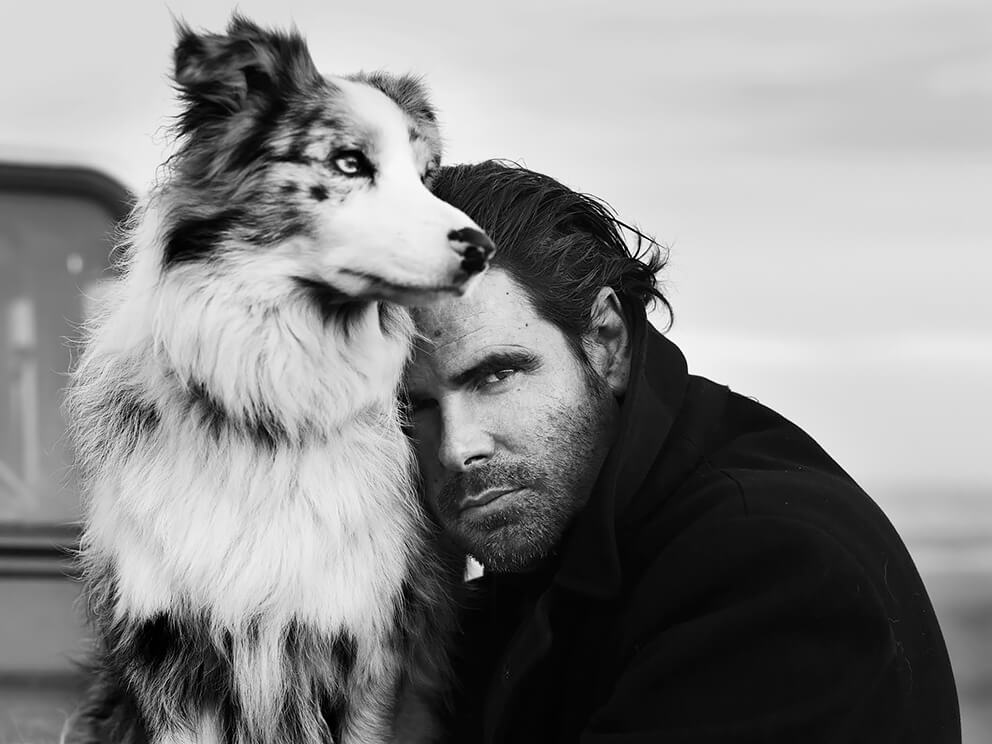Stephan Vanfleteren studied photography at Lucas Institute in Brussels (1988-1992). From 1993 to 2009, he worked as a free-lance photographer for the Belgian Journal De Morgen and always worked and invested in his own personal projects. Actually, Stephan works for museums, he's publishing his portraits in foreign journals and several foreign magazines. He's cofounder of Hannibal Publishing and Cannibal Publishing. Stephan Vanfleteren is art-director for the two publishing houses.
PRICES
1996 - World Press Photo Award - Sports, third prize stories - Boxing in Cuba
1997 - World Press Photo Award - Daily Life, first prize stories - Aids, Kenia
1998 - European Fuji Awards
2000 - World Press Photo Award - Arts and Entertainment, third prize stories, Elvis & Presley
2001 - World Press Photo Award - Children's Award, prize singles - Afghanistan
2001 - European Fuji Award
2007 - Nikon Press Photo Award
2009 - Louis Paul Boon award - Belgium
2010 - Lead Awards: 'Portätfotografie des Jahres', Germany
2011 - Henri Nannen Price, Germany - Tomi Ungerer
2012 - Vijfjaarlijkse Cultuurprijs voor de Provincie West-Vlaanderen
2012 - National Portrait price of the Netherlands - Rem Koolhaas, Dutch architect
2013 - World Press Photo Award - Staged Portraits, first prize stories, People of Mercy
2019 - Henri Nannen Price, Germany - Angels of the Sea - Mare Publication.
BOOKS
1999 - Elvis&Presley, with photographer Robert Huber (Switserland)
2000 - Buren, with Mark Power & Eva Leitolf
2003 - Tales from a Globalizing World
2005 - Flandrien - Cannibal Publishing
2007 - Belgicum - Hannibal Publishing
2009 - Portret 1989-2009 - Lannoo
2012 - En avant, marche! - Hannibal Publishing
2013 - Façades & Vitrines (Limited edition 666 exp) - Hannibal Publishing
2014 - MMXIV - De Red Devils - Cannibal Publishing
2014 - Atlantic Wall - Hannibal Publishing
2015 - Charleroi, il est clair que le gris est noir - Hannibal Publishing
2018 - SURF TRIBE - Hannibal Publishing
2019 - PRESENT - Hannibal Publishing
2019 - ONUITGESPROKEN - Hannibal Publishing
About PRESENT
Stephan Vanfleteren is mainly known to the general public for his penetrating black & white portrait photography, but over the past
decades his work has ranged to documentary, artistic and personal pictures.
From street photography in world cities like New York to the genocide of Ruanda, from storefront façades to the mystical landscapes of the Atlantic wall, from
still lifes to intense portraits. The iconic images sit side by side with unknown treasures in this heavy tome containing no less than 505 photographs.
In the very personal accompanying text, Vanfleteren reflects on how his own work and the photography genre as a whole have evolved
in recent decades. You get a close-up look at his intriguing career from the very beginning, when he travelled the world with an appetite
for action. He also photographed his home country: all of the headline news stories of the 1990s appeared before his lens.
Around the Millennium, Vanfleteren started to focus on that which is disappearing. With painstaking attention to nuance he created a visual archive
of his homeland and of his fellow Belgians, in his own inimitable style.
In the last few years Vanfleteren has brought the world inside, to his daylight studio, resulting in many encounters and portraits.
This book includes two new series – not previously published – which were born in the intimacy of his studio: an exploration of the still life and a study of nude photography, both in colour.
Present is an impressive overview of Vanfleteren's oeuvre that provides a complete picture of him as a photographer, an artist, and above all a human being who faces life with empathy, wonder, and curiosity.
More about PRESENT